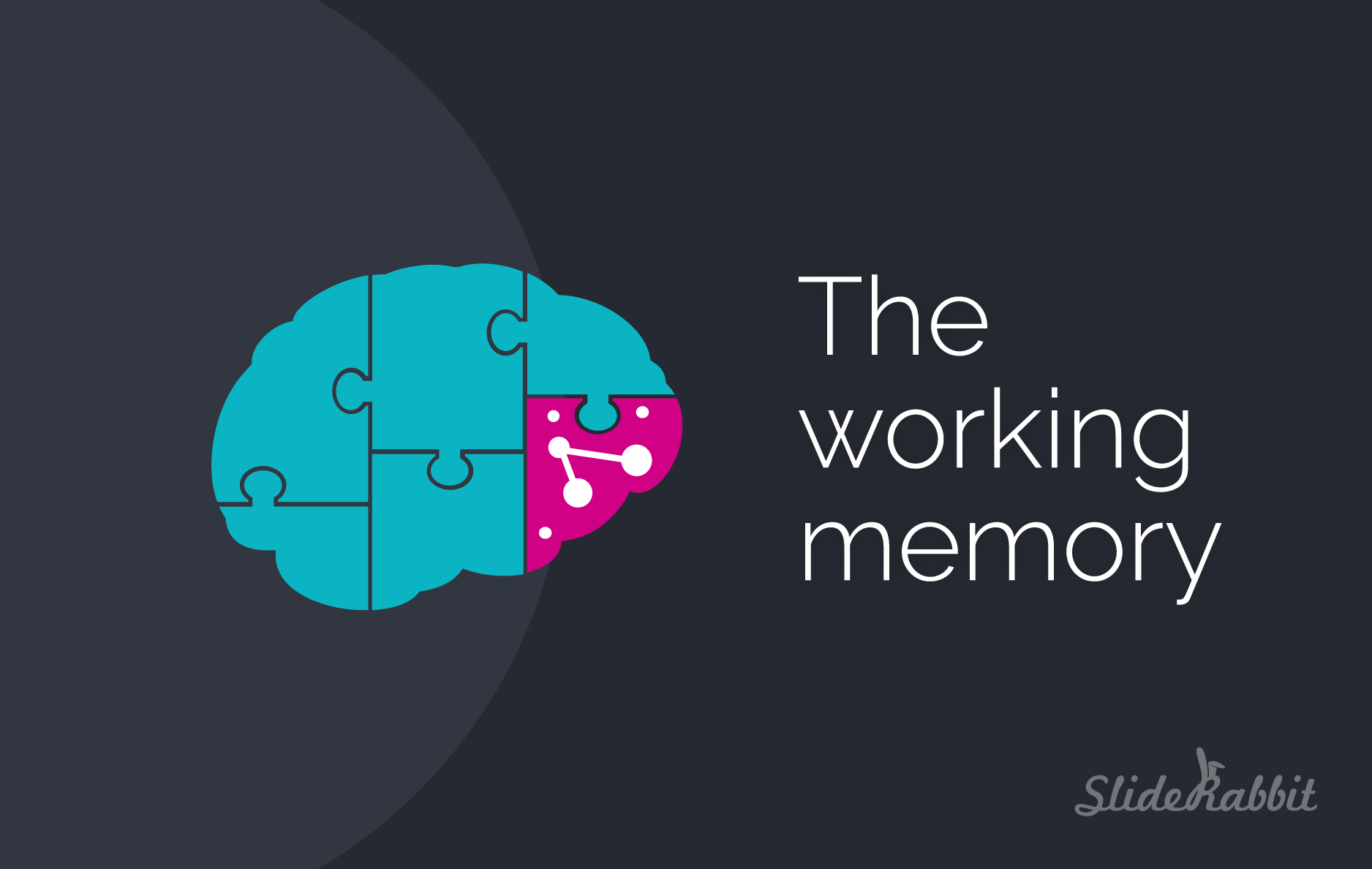Simple & effective presentation slides
Respect working memory & have more impact
Making presentation slides? We’re here to help – it’s what we do all day long!
The most common mistake we see? Over-stuffing your presentation slides. It makes sense in a way; we have SO much information we want to share with our audience. We want them to have every piece of information at their finger tips. Maybe we’re even afraid if we leave out a detail, someone will call us on it!
But truly, when we share everything, we are overwhelming our audience, and they are more likely to forget more of what we are telling them. The more information we throw their way, the harder it is for them to parse what is important. That makes them more likely to miss our main points all together.
Why? It comes down to brain science.
Working memory and information processing
Our working memory is where the brain temporarily stores new information as it comes in. The general consensus is that our working memory can hold and work with about 5 – 7 pieces of new information at a time.
That means that when we are sharing new information with an audience, we need to be aware that more than 5 – 7 pieces of new information will overwhelm them and they will forget at a faster pace as their working memory struggles to keep up. We want them to walk away with our main points, not with a glazed expression.
So if working memory has limited duration and limited capacity, we need to reduce the complexity of the information to make sure that the right stuff sticks.
How to simplify your presentation slides
Simplifying your content can be daunting but here’s a quick step-by-step:
-
Identify your main point or argument.
Evaluate each slide by asking the question: “What do I want them to understand and remember?” -
Reduce redundancy & clutter.
Take out that editing pen. Are you being obvious or redundant in your text or labels? Are you including visual clutter that may hinder your audience’s ability to find your main argument? -
Treat detail accordingly.
What detail can you remove from the slide and include in your talk track or a handout? What detail doesn’t support the main point? If you need to keep some detail, how can you use design to deemphasize that information so that your main message can come through? -
Use multiple slides.
Still too much on each slide? Spread your information out across your presentation slides so that each can tell just one story.
Still nervous about leaving out that extra information? Try one of these tricks:
- Notes Layout:
Did you know you can generate a file with your slides and extra information without much extra work? Put detail into the speaker notes section and then generate a “Notes PDF” as a handout for your audience. - Back Pocket Slides:
Worried someone is going to ask for the underlying data? Create a hyperlink on your main slide to a hidden slide with any of that nitty gritty. It won’t show while you’re presenting, unless you click that hyperlink. Someone asks that feared questions? Voila! You’re ready for it.
More benefits of simpler slides
Did you know that more slides can actually improve your audience engagement? The more frequently you change the slide on the screen, the more your audience feels the pressure to pay attention! Simpler presentation slides are easier to understand AND hold your audience’s attention.
Interested in learning more about how brain science can improve your effectiveness as a presenter? We cannot recommend Dr. Carmen Simon enough!
Need help making simple presentation slides? We provide content consulting and simplification services! Drop us a line!







Leave A Comment
You must be logged in to post a comment.